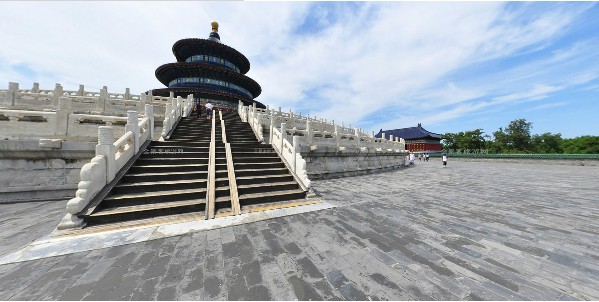I would like to re-historicize Beijing's urban development with a particular focus on hutong refurbishment, migrant worker communities,
我想要重塑北京城市發(fā)展的歷史,著重討論胡同的翻新,外來務(wù)工人群
and Beijing's unique walls within walls spatial as well as cultural identity.
以及北京獨特的墻中墻的空間以及文化上的特性
My method in the fresh look at Beijing's history will be to pose a series of questions and to see where the answers might lead us.
我從一個全新角度看北京歷史的方法是提出一系列的問題,看看答案能把我們帶到哪里
First, why is China's capital at such an unlikely location 100 miles from the sea, over twice that distance from a major river,
第一,為什么中國的首都設(shè)在這樣一個不可能的地理位置上,離大海100英里,走200多英里才能到一條主要河流
with a harsh climate of dust storms, few natural resources, and desperately short of water.
冬天沙塵肆虐,天氣惡劣,自然資源稀缺,而且季度缺水

Trade is the answer. From recorded time, Beijing was the nexus of trade routes connecting the manufacturing centers of the south
答案是,通商,有記載以來,北京是連結(jié)商路的樞紐,連接南方的制造業(yè)中心
via mountain passes to the farmlands of Manchuria and the nomadic peoples of the northern steppe.
由穿山的隧道通往滿洲的農(nóng)田,也通向北部干草原的游牧民族
Moreover the crescent of hills offered protection and living near vast rivers, which flooded and changed course was dangerous.
而且,圍成新月形的山對城市形成了保護,因為居住在大河之濱,由于洪水爆發(fā)和河水改道,是很危險的
Over time, Beijing also developed its own manufacturing sectors, particularly in printing, construction materials and apparel
隨著時間推移,北京也發(fā)展起來自己的制造業(yè),尤其在印刷業(yè),建筑材料,和服裝方面
Why is it called Beijing, meaning northern capital?
這個城市為什么叫北京,也就是北方的首都呢
Chinese capital has shifted location over centuries.
千百年來,中國的首都不斷易位












